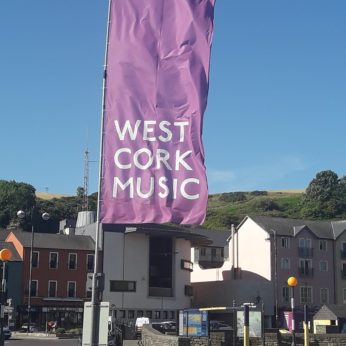Composer: Louis Vierne (b. 1870 - d. 1937)
Performance date: 04/07/2018
Venue: Bantry Library
Composition Year: 1870 - 1937
Duration: 00:33:31
Recording Engineer: Tom Norton, RTÉ
Instrumentation: vn, pf
Instrumentation Category:Duo
Artists:
Cédric Tiberghien -
[piano]
Alina Ibragimova -
[violin]

44. CRESPO SERIES
Louis Vierne [1870-1937]
Sonata for Violin and Piano in G minor Op.23 [1906]
1. Allegro risoluto
2. Andante sostenuto
3. Intermezzo – quasi vivace
4. Largamente – Allegro agitato
Louis Vierne was born under an unlucky star, he was almost completely blind from birth and suffered an extraordinary litany of personal disasters from a life-threatening accident, typhoid, divorce, death of his youngest son from TB, almost complete loss of his remaining sight and in 1917 the loss of his surviving son killed in action. He was continually passed over for the Organ Professorship at the Conservatoire, but in 1900 he won through open competition the post of titular organist for Notre Dame Cathedral. He held this post until his death thirty seven years later, dying, so to speak, in harness, while giving his 1,750th organ recital.
Although only seventeen out of his 62 published works are for organ, his renown as an organist has put his other works in the shade including the Violin Sonata he wrote for Eugene Ysaÿe. This is a superb score, bursting into action from the very first bar with a hyperactive, galloping theme led by the piano in unrelenting mood scarcely leaving space for the violin. The second theme is quieter, giving the violin more space to breathe. The development and recapitulation are handled conventionally and the coda catches fire once more.
The Andante sostenuto again gives primacy to the keyboard with a long, flowing melody of nocturnal poetry eventually passed to the violin. Vierne’s lyrical imagination reaches great heights in this generous-hearted movement in a glorious passage where the violin finally breaks free and weaves long lines of unrestrained melody. The Intermezzo is a highly sophisticated dance, flashing by at high speed, an air of devil-may-care and catch-me-if-you-can, but tightly controlled with not a note wasted.
The Finale begins with great throbbing chords, which keep returning as the music circles hesitantly about themes from earlier movements. Once the Allegro breaks in the thematic and harmonic shifts become intentionally confusing as a sudden ardour threatens to take over completely. Unbelievably the temperature keeps on rising right to the end, the civility and good behaviour of the earlier movements is cast aside in a blaze of unrestrained passion.
Francis Humphrys
Copyright © 2025 West Cork Music. All rights reserved.
Designed and developed by Matrix Internet